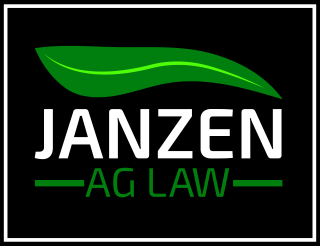Protecting the Farm With and From Technology
/Farm security means protecting the real property and the animals present at a farm. It involves proper animal care, screening and training employees, and physically hardening the farm’s boundaries. Now farm security also requires the use of and defense against high tech cameras, drones, and virtual reality.
A recent Wired article followed several activists with Direct Action Everywhere (DxE), a guerrilla animal liberation group founded in San Fransisco in 2013. The article recounts how a few DxE members used quadcopter drones to take overhead video of a hog farm. They hid tiny cameras around the inside of the hog barns on an earlier intrusion. These cameras were small enough to escape workers’ notice. Then, during a nighttime raid, the DxE activists used traditional high speed digital cameras and a 360-degree camera mounted on a selfie stick with fish eye lenses to record the inside of a barn. They recorded piglets, sows in gestation stalls, and pigs in standard modern livestock barns. The activists used their recordings to manufacture a virtual reality (VR) experience so others could see and hear what the inside of a barn is supposedly like. This type of advanced camera technology, coupled with social media, gives animal activists powerful new tools in their battle to bring down animal agriculture.
It is worth noting that several DxE members are facing criminal charges for trespassing, burglary, and theft for intruding on a Utah pig farm and “extracting” animals from the farm. At least one member intends to try to use VR as part of his defense—he wants the judge to require the jury to put on VR goggles to view the footage the member allegedly created when he raided the farm. The trial is set to begin this spring.
Obviously activists put animals and our food chain at risk when they intrude at a livestock farm. Farms implement strict biosecurity protocol to protect animals against cross-contamination, pathogens, bacteria, and viruses. Animals are moved from one part of a farm to another when breeding, giving birth, or weaning. Intrusions also risk damaging the physical structures installed to protect and house livestock. Our food chain is only safe as long as we can guarantee the security of farms. Heavily edited footage from groups like DxE ignores the realities of modern livestock farming.
So what can a farm do to protect itself? I’ve written before about the importance of screening employees before hiring to avoid hiring undercover activists and on providing continuous employee training on animal care. Employees must understand how and be willing to care for, move, and handle the animals. Employees should be trained how to spot ill or injured animals and know what to do when that happens. Mortalities must be properly managed. Establish science-based animal care and environmental policies on the farm.
Farmers can use technology to protect themselves and their animals in much the same way guerrilla groups are using technology to target farms. Large livestock farms should consider implementing a farm security policy. Installing small cameras to monitor high traffic or sensitive areas can allow farmers to keep an eye on employees and would-be trespassers. Motion-activated equipment is not likely to help in areas where pigs or chickens are living, but could be used at soft entry points into a barn or coop. Traditional fences, setbacks from roads, gates, locks, no trespassing signs, and tree lines can help to maintain a sense of privacy and security at a livestock farm. Cameras trained on driveways or parking areas can record license plates should someone attempt to unlawfully enter the premises. Finally, owners should conduct periodic audits and inspections of the grounds to ensure employees are properly handling the livestock and to check for signs of unnoticed intrusions. Old-fashioned detective work can uncover doors left ajar, unfastened locks, disturbed equipment, hidden cameras, and displaced dirt or gravel.
Animal activists continue to use new tools—cameras, drones, and social media—to attack livestock farms in the United States, Canada, Mexico, Australia, Spain, and other places. While new laws can help dissuade intrusions and punish trespassers, farms should develop a security plan to affirmatively protect themselves. Technology must play a role.





